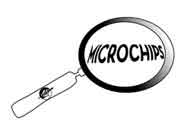Veterinary, Shelter and Humane Professionals Seek One Scanner to Read All Microchips
 |
In March and April 2004, veterinary, shelter and humane organizations began mobilizing efforts to educate the public about a national problem: Different microchips are being implanted in U.S. companion animals without a scanner that can read them all.
As a result, professionals fear that they may not be able to return lost animals – even those with microchips – to their owners. Until a solution is found, some industry members are telling clients about the system’s loophole. Others may lobby manufacturers to produce one scanner that reads all microchips.
Approximately 11 million 125 kilohertz (kHz) microchips have been implanted in U.S. companion animals since the late ‘80s, according to industry estimates. Some European countries started using 134 kHz microchips in 1996, after the International Standards Organization (ISO) set that radio frequency as the world standard.
The 134 kHz frequency was chosen by the ISO in an attempt to sidestep sticky negotiations between competitive manufacturers, explained Walt Ingwersen, DVM, past chair of the World Small Animal Veterinary Association (WSAVA) microchip committee and participant on the ISO microchip committee. To ease transition, some user groups (including AAHA, the Canadian VMA and the Ontario Association of Animal Welfare Administrators) suggested an 80 percent upgrade in readers [scanners] before the ISO chip was used, said Ingwersen. Both WSAVA and the AVMA have sent letters to manufacturers requesting a solution to the incompatibility issue between microchips and scanners, he added.
The Oregon and Wisconsin Humane Societies use ISO chips, and AAHA and the AVMA support ISO compliance over the long run. An AAHA position statement specifies that “a universal reader should be developed and implemented prior to the actual introduction of ISO-standard microchips.”
In January 2004, the issue came to a head when Banfield, The Pet Hospital, began implanting ISO chips in U.S. animals. The company plans to implant about one million microchips this year, said Scott Campbell, DVM, Banfield’s chair and CEO. In response, American Humane in Denver, the Colorado VMA and several other organizations voiced concern about the use of ISO chips in letters to Banfield and to their members. Some groups suggested that veterinarians tell clients that most scanners in the United States cannot read ISO chips. In an email posting to members, Colorado VMA Executive Director Ralph Johnson, wrote, “Pet owners are paying for a procedure with the expectation that it will provide peace of mind about the return of their lost animals, but in reality, such is not the case.”
The main difference between microchips – electronic numbers or “bar codes” encased in plastic or glass – is the frequency at which they are activated by scanners, said Jed Rogers, DVM, chair of the Denver Area Veterinary Medical Society’s Animal Issues Committee.
Four chip manufacturers compete for U.S. market share, and scanners read or identify one or two of the microchips, but not all of them with one scan. AVID Identification Systems, a California-based manufacturer that sells 125 kHz chips in the United States and 134 kHz chips internationally, offers a scanner in Canada that reads all chips. The product “did not meet the standards of United States users” when it was field-tested in the United States, said Dan Knox, DVM, director of Companion Animal Operations for Avid. “It is being used in Canada,” he explained, “but one must scan for an excessively long time in order for it to read” and it requires professionals to scan animals several times.
Scanning more than once is not a viable solution to the microchip issue, said Rogers, who explained that such a practice could endanger staff members who handle feral, aggressive animals.
As professionals seek a solution to this industry issue, some state VMAs and national veterinary groups may join forces with local humane and shelter organizations to pressure microchip manufacturers into creating a truly universal scanner - one that reads all chips with one swipe.
“The next step is for the veterinary and shelter communities to work together to demand a solution,” said Rogers. “Nothing is going to happen otherwise.”



